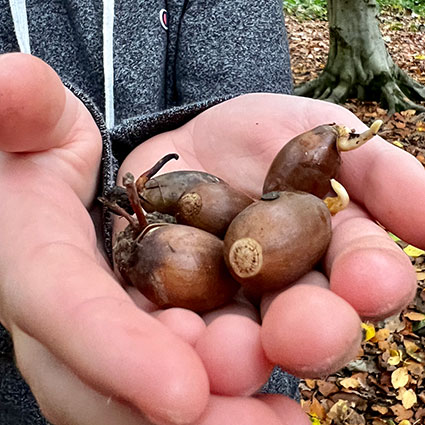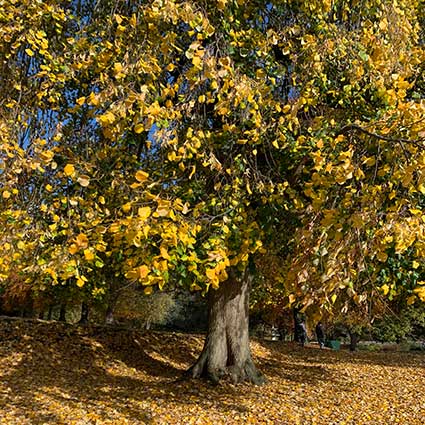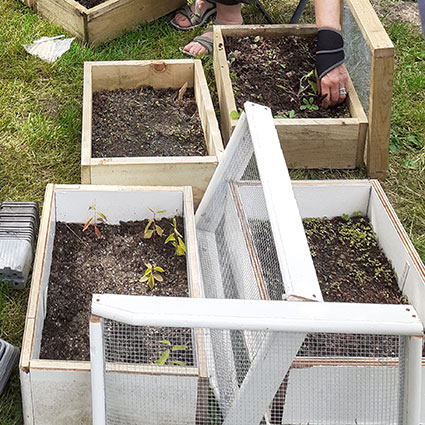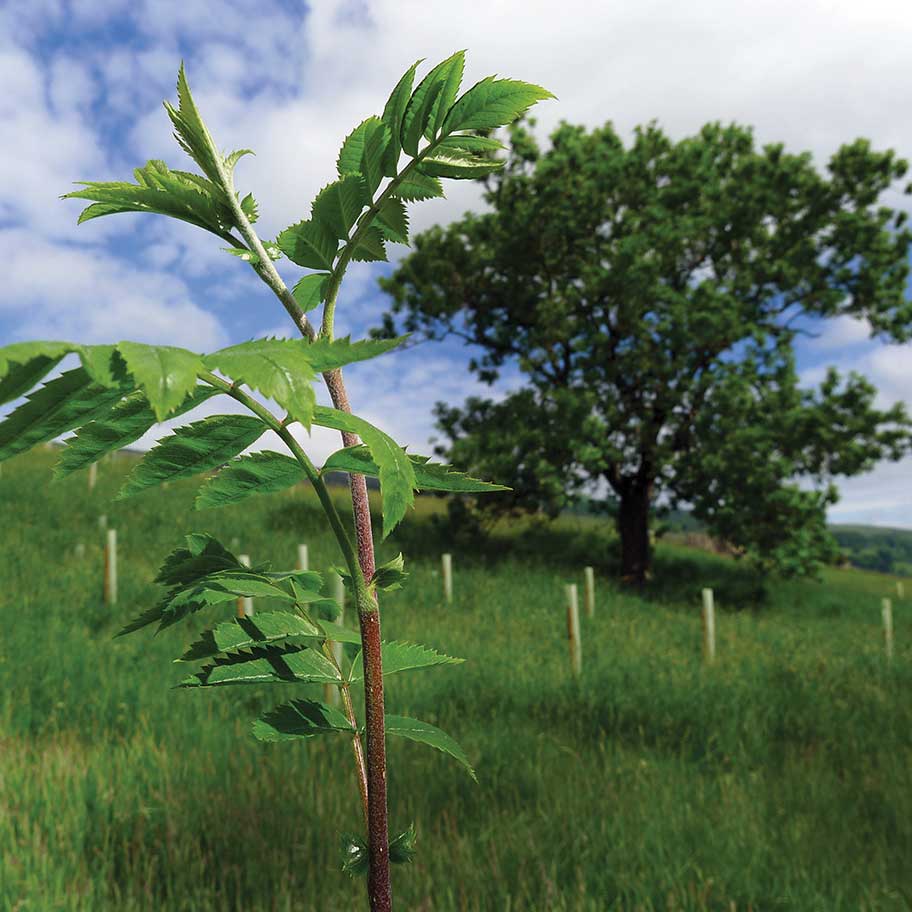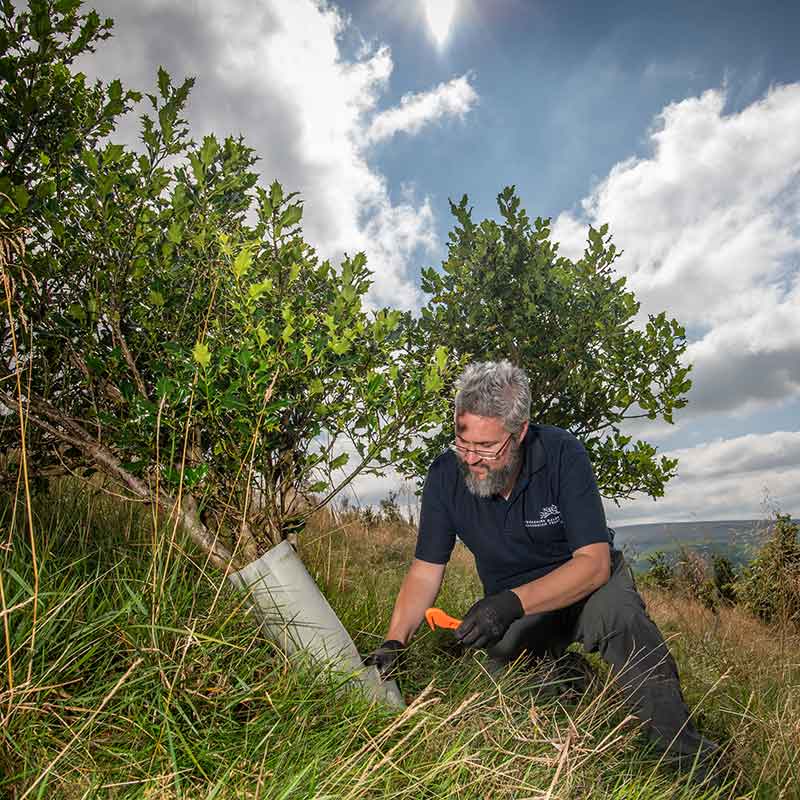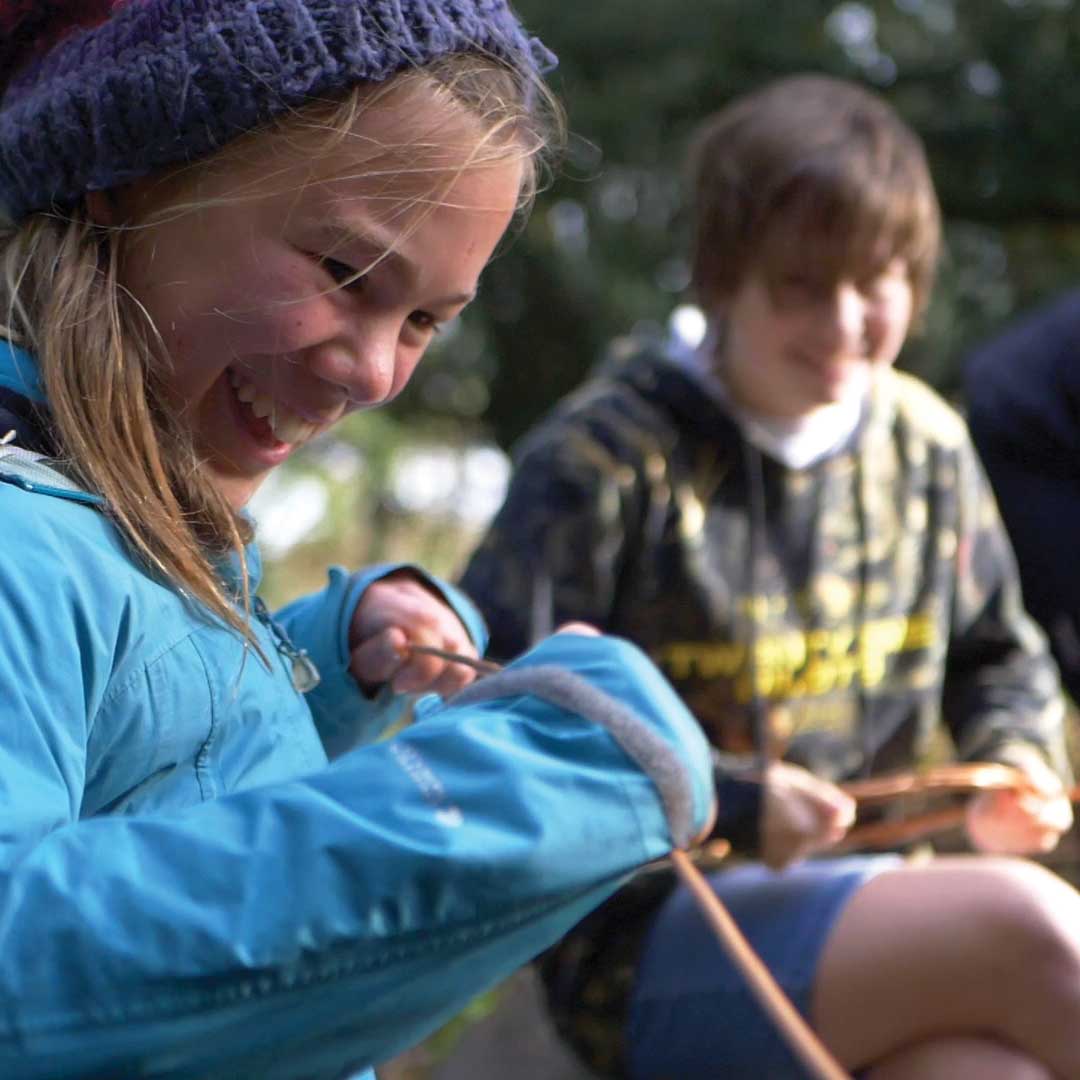How to grow a tree from seed
From Seed to Sapling
The Seed to Sapling project, run by Yorkshire Dales Millennium Trust, helps to ensure the right trees are available to plant in the Yorkshire Dales by creating community nurseries where native saplings are grown from local provenance seed.
The project supports local communities to set up their own micro nurseries, as well as providing opportunities for volunteers to get involved and take practical action for nature. As part of the project we've created these guides to help you grow your own saplings from local provenance seed. Download the guides below, or read on to find out more.
Where to collect seed
Ancient and semi-natural woodlands or ancient hedgerow are ideal places for collecting seed.
You need to get permission from the landowner to collect seeds, even if you are using a public right of way. A site with special protection such as a National Nature Reserve or Site of Special Scientific Interest will also require government permission. You can check if a woodland is ancient using Magic Maps. Select ‘Ancient woodland’ under the ‘Habitat and species/Habitat/Woodlands’ section.
It is good practice to collect seed near to where the new trees will be planted and to store the seeds from different species in separate clearly labelled bags or containers. Record the date and location the seed was collected (Grid Reference Finder may help with this) and keep track of the label during the growing process so any source of disease can be identified.
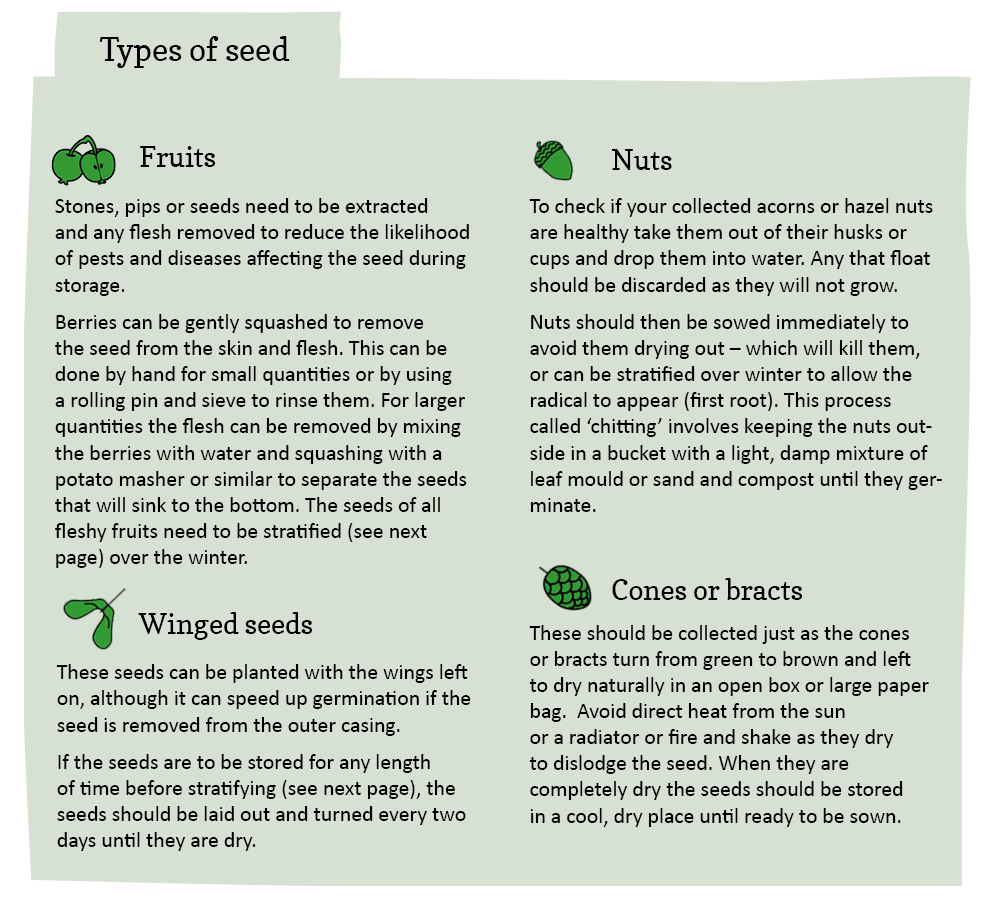
When to collect seed
It’s important to collect seeds at the right time and not to collect more than you need. Be careful not to remove buds, and it’s better to collect a few seeds from a number of different trees to vary the genetic stock.
The best time to collect is when seeds or nuts are ready to disperse naturally, but avoid the first to fall as these can often be poor quality. Do not keep seeds in sealed or non-breathable containers for any length of time as the seeds become too moist.
Fruits should not be piled too deeply and are best stored in a cool, dry place (a fridge is ideal), in hessian, cotton or paper bags until they are ready to be extracted.
How to stratify your seeds
Check our Tree Growing Calendar for details on the timing and process required for different tree species. Some seeds can be planted directly into a pot of soil. Others will need the flesh of the surrounding berries removed and a dormant phase (stratification) of at least one winter before planting.
- Use an equal mix of peat free compost and a coarse material such as sharp sand, bark or grit.
- Mix the seeds with an equal volume of your stratification medium and put them in a well- drained container or bucket with a mesh lid to keep birds or animals away.
- Keep the container outside, protected from frost and ensure the mixture is kept moist but not saturated.
- In the spring, tip out the mixture and any seeds that are showing small shoots or roots are germinating and should be quickly sown.
- Put any seeds that haven’t grown back into the stratification medium and check every week during spring.
- If some seeds haven’t germinated by the end of spring, don’t be disheartened as they may need two winters to germinate.
How to sow your seeds
Once the seeds have germinated they can be removed from the stratification mixture and sown. Alternatively you can sow all the seeds when some have started germinating in the hope this is an indication that the remaining seeds will soon also start growing.
To sow your seeds follow these steps:
- Fill small pots or root containers with peat free potting compost.
- Sow a single germinating seed or pinch of small seeds in each pot.
- Small seeds can be placed on the surface and covered with a thin layer of compost whilst larger seeds can be planted to a depth of about one and a half times their length.
- Ensure the pots have good drainage and are watered regularly so the compost remains moist.
Pricking out and potting on
Once your seeds have germinated the young trees will need nurturing - watering, weeding and feeding - so they grow healthy and strong. If spring has arrived and your seeds have not germinated, don’t give up hope! Many seeds can take at least two winters to germinate and so it is definitely worth leaving them for another year.
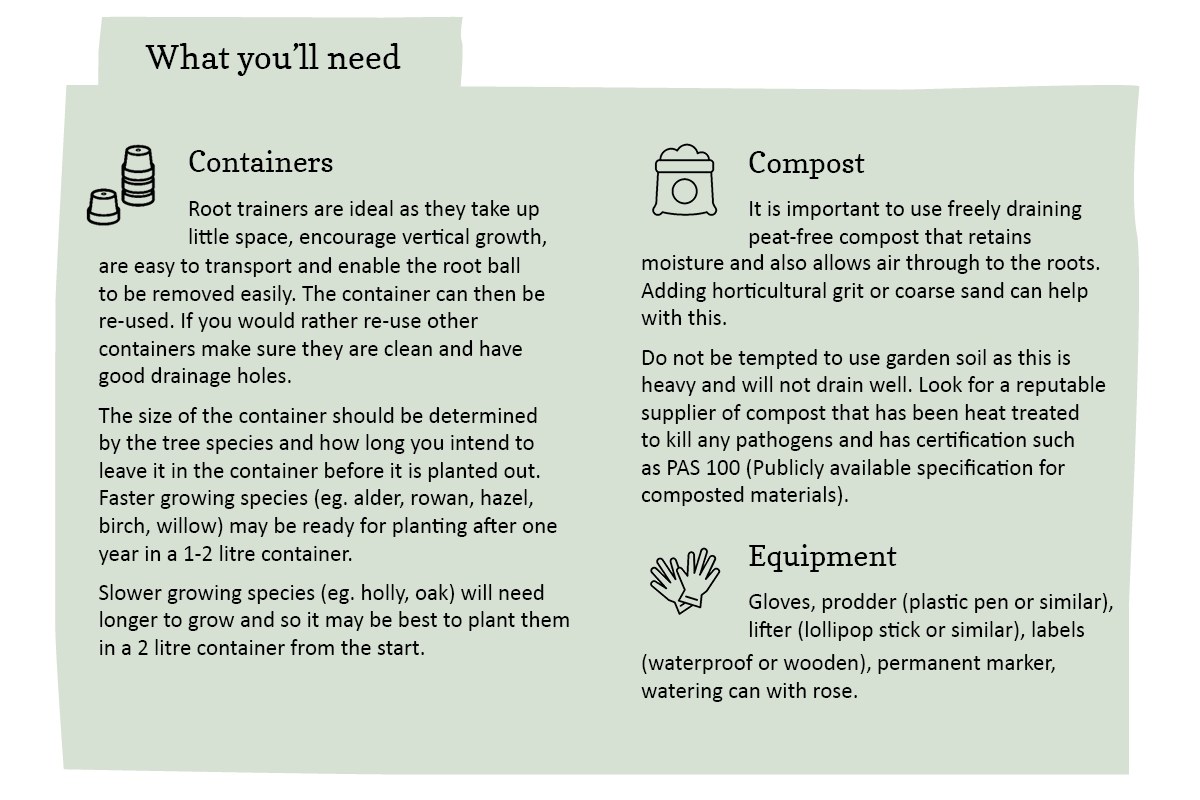
If your germinated seed has remained in a seed tray to grow into seedlings they will need moving into a larger container or growing bed.
Your seedlings will first develop seed leaves (Cotyledons) as they start to grow. Wait until the second set of leaves have grown before you prick them out. These leaves will look like the leaf of the adult tree and mean that the tree has developed a root system strong enough to cope with being transplanted.
Fill all your containers ready with compost and then make a hole with the prodder deep enough for the seedling roots to be fed in. If using a plastic pen as a prodder you can rub this on your trousers or sleeve to create a static that can help with feeding the roots gently into the hole (see The Tree Growers Guide video for this process).
Lift the seedlings from their germination tray using a lollipop stick or similar to go right down under the roots and lift gently holding the leaves rather than the stem. Once in the pot firm down the compost and water the seedlings thoroughly but lightly with a mist or fine watering can rose.
Care for your seedlings
Although our native trees need plenty of light to grow healthy and strong they do not like high temperatures and may need protecting from scorching on hot sunny days and frost during winter.
Horticultural fine-mesh netting can be used to help protect the growing trees from the elements as well as from birds and insects including butterflies, whose caterpillars can quickly defoliate trees.
Water the young trees regularly so that the compost remains moist but is not waterlogged. The trees will also benefit from a well-balanced liquid plant feed during the growing season or a slow release fertiliser could be used.
Carefully remove any weeds that appear as soon as possible to avoid disturbance to the trees delicate roots.
Protect against pests and diseases
Adopt good growing and biosecurity techniques to protect your growing trees from the increasing number of pests and diseases.
‘Damping off’ is a condition caused by fungi and other organisms in the soil that will kill seedlings even if they are growing well to begin with. Seedlings die off in clumps or entire trays and unfortunately there is usually little hope of saving them. To prevent this and avoid great disappointment follow these steps.
- Use a certified, commercial compost.
- Keep the containers in a well-ventilated area, protected from birds, mice and other animals.
- Avoid overcrowding and keep different species separate and clearly labelled.
- Use clean and fresh water – if collecting rain water ensure the collection tanks are kept clean.
- Use clean equipment including watering cans and any tools.
- Avoid growing the trees near any standing water.
- Use shoe dips containing a disinfectant to help prevent the transfer of soil-borne diseases.
- Check your plants regularly for any signs of disease. For more information visit The Tree Growers Guide
- Keep an eye on any mature trees and shrubs near to your growing area.
- Once your trees are about 30 to 40cm tall, after one or two years, they are ready to be planted out into their final position.
Congratulations and many thanks for all your hard work helping to grow trees for our future!
Learn more about our woodland work
Seed to Sapling
One of the constraints on tree planting is sourcing a diverse range of tree saplings suitable to plant in the Dales. We're helping to ensure the right trees are available by creating community tree growing schemes where native saplings are grown from seed.
Restoring our native woodlands
25 years ago YDMT joined forces with other organisations to expand tree cover across the Yorkshire Dales and surrounding areas. Since then, we’ve supported the planting of over 1.5 million native broadleaf trees.
Discover your woods
Want some inspiration for things to do in the woods? Check out our woodland activities, talks and resources put together by our YDMT woodland experts.

